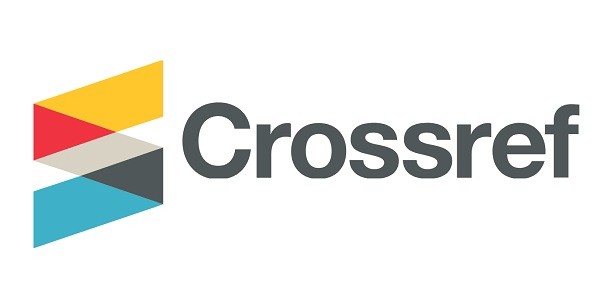DOI: 10.5937/jaes11-4856
This is an open access article distributed under the CC BY-NC-ND 4.0 terms and conditions.

Volume 11 article 262 pages: 177 - 184
Increasing
competition on a global market forces enterprises to increase the efficiency of
internal processes in order to retain competitiveness. Performance measurement
is becoming one of the main strategic factors of business success, and can be
performed also within the frame of benchmarking initiative. The aim of this
paper is to draw up the benchmarking concept of small sized construction company,
and verify its application on the case study. For this reason it was necessary
to identify the set of performance indicators that can be measured and
evaluated. It has been found out that firm size is limiting factor for
application of benchmarking in the company, as well as unavailability of all
necessary data. However, it was concluded that even a limited form of
benchmarking provides a valuable information to the company management relevant
to strategic decision making ensuring effective firm’s management, and long
term financial stability.
Acord, T.,
(2000) Defi ning benchmarking,FDM: Des Plaines, 72 (15), 34-35.
Alarcon,
L.F., Grillo, A., Freire, J., Diethelm, S., (2001) Learning from collaborative
benchmarking in the construction industry,IGLC-9, Proceeding of the Ninth
International Group for Lean Construction Conference.Available at: http://cic.vtt.fi
/lean/singapore/Alarconet.pdf
Antosova,
M., Csikosova, A., Culkova, K., Senova, A., (2013) Benchmarking research of
steel companies in Europe,Metalurgija, 52 (3), 410-412.
Bednarova,
L., Liberko, I., Weiss, R., (2009) Benchmarking v riadenipodnikov, In:
ActaMontanisticaSlovaca, 14 (1), 86-91.
Bernstein,
H.M., Russo, M.A., (2013) Contractor safety programs yield fi nancial benefi
ts,ENR (Engineering News-Record), 271 (7). (accepted for publication)
BlazhevskaStoilkovska,
B., ZileskaPancovska, V., Mijoski, G., (2013) Perceptions of Work Safety among
Employees in Construction Sector in Macedonia, In Proceedings of International
Conference Safety Engineering in Function of Improvement of the Working Conditions,Ohrid,
pp. 249-255.
Borgia, C.,
García-Bolanos, M., Li, T., Gomez-Macpherson, H., Comas, J., Connor, D.,
Mateos, L., (2013) Benchmarking for performance assessment of small and large
irrigation schemes along the Senegal Valley in Mauritania, Agricultural Water Management,
121, 19-26.
Cetkovic,
J., Knezevic, M., Ivanisevic, N., Rutesic, S., (2010) Mark of the investment projects
in civil engineering with the special retrospection to the economical-fi
nancial mark of the project, Terra Spectra – Central European Journal of
Spatial and Landscape Planning, 2 (1), 47-55.
Clark,
A.M., Atkin, B.L., Betts, M.P., Smith, D.A., (1999) Benchmarking the use of IT
to support supplier management in construction, Journal of Information
Technology in Construction, 4 (1-16), Available from:
http://www.itcon.org/1999/1
Costa, B.
D., Formoso, C. T., Kagioglou, M., Alarcon, L. F., (2004) Performance
Measurement System for Benchmarking in the Construction Industry, Proc. 12th
IGLC Conf. LOSchool, Elsinore Denmark, 451-463.
Czech Statistical
Offi ce, offi cial web page. Available from: http://www.czso.cz/
Egan, J.,
(1998) Rethinking construction: report of the construction task force on the scope
for improving the quality and effi ciency of UK construction. HMSO. Available
from: http://www.constructingexcellence.org.uk/pdf/rethinking%20construction/rethinking_construction_report.pdf
Eminocal,
M., Oral, E.L., Erdis, E., Vural, G., (2007) Industry fi nancial
ratios-application of factor analysis in Turkish construction industry,Building
and Environment, 42 (1), 385-392.
Harrington,
H.J., Harrington, J.S., (1996) High Performance Benchmarking: 20 steps to
success, McGraw-Hill, USA.
Holloway,
J.A., Hinton, C.M., Mayle, D.T., Francis, G.A.J., (1997) Why benchmark? Understanding
the processes of best practice benchmarking, Proceedings of Business, Track,
British Academy of Management Conference, London, 271-291.
Hudson, M.,
Smart, A., Bourne, M., (2001) Theory and practice in SME performance
measurement
systems. International Journal of Operations and Production Management, 21(8),
1096-1115.
Hung,
C.-T., (2013) Evaluating and benchmarking productive performance of shipping companies,Applied
Mechanics and Materials, 284-287, 3675-3678.
Isoraite,M.,(2004)
Benchmarking methodology in a transport sector, Transport, 19 (6), 269-275.
Klasic, K.,
Janzetic, M., (2010) Insurance of individuals on construction sites,Sigurnost, 52(1),
35-47.
Kotler, P.,
(1994) Marketing management – Analysis, Planning, Implementation and Control, Prentice
Hall, New Jersey.
Leibfried,
K.H.J., McNair, C.J., (1994) Benchmarking: a tool for continuous improvement, HarperCollins
Publishers, London.
Lewis,
J.C., Naim, M.M., (1995) Benchmarking of aftermarket supply chains,Production Planning
and Control, 6 (3), 258-269.
Ministry of
Industry and Trade of the Czech Republic. Benchmarkingovydiagnostickys ystemfi
nancnichindikatoru INFA. Available from: http://www.mpo.cz/cz/infa.html
Ministry of
Labour and Social Affairs of the Czech Republic. Informacnisystem o prumernemvydelku.
Available from: http://www.mpsv.cz/clanek.php?lg=1&id=1928
Mbugua,
L.M., Harris, P., Holt, G.D., Olomolaiye, P.O., (1999) A framework for
determining critical success factors infl uencing construction business
performance, In: Hughes, W. (ed) Procs. 15Th Annual ARCOM Conference. September
5-7, Reading: ARCOM. 1, 255-264.
Morling,
P., Tanner, S., (2000) Benchmarking a public service business management system,Total
Quality Management, 11 (4-6), 417-426.
Petronijevic,
P., Ivanisevic, N., Rakocevic, M. Arizanovic, D., (2012) Methods of calculating
depreciation expenses of construction machinery,Journal of Applied Engineering Science,
10(1), 43-48.
Pillai, A.
S., Joshi, A., Rao, K.S., (2002) Performance measurement of R&D projects in
a multiproject, concurrent engineering envir onment,International Journal of
Project Management, 20, 165-177.
Renko, N.,
Delic, S.,Skrtic, M., (1999) Benchnmarking u strategijimarketinga, Mate,
Zagreb.
Takim, R.,
Akintoye, A., (2002) Performance indicators for successful construction project
performance, In: Greenwood, D (Ed.), 18th Annual ARCOM Conference, 2-4
September 2002, University of Northumbria. Association of Researchers in
Construction Management, Vol. 2, 545-55.
Van
Schalkwyk, P.W., Smith, E., Morgan, N.,(1996) Contemporary Issues in Strategic Management,Kagisco
Publishers, Pretoria.
Varghese, B.,
Menacere, K., (2012)The financial health of construction companies in Qatar: A
case study,International Journal of Engineering Research in Africa, 8, 55-72.
Waszek, J.,
(2013) Optimalizacenakladuves tavebnimpodniku, Final thesis, Brno University of
Technology, Faculty of Civil Engineering. 105 p. Mentor
Yakovleva,
N., Sarkis, J., Sloan, T., (2012) Sustainable benchmarking of supply chains: The
case of the food industry,International Journal of Production Research, 50 (5),
1297-1317.
Yunus,
N.M., Malik, S.A., (2012) Development of fi nancial model using fi nancial
ratios in predicting business performance of IBS construction company, ICSSBE
2012 - Proceedings, 2012 International Conference on Statistics in Science,
Business and Engineering: “Empowering Decision Making with Statistical
Sciences” 2012, 209-214.
Zujo, V., Car-Pusic, D., Brkan-Vejzovic, A., (2010)
Contracted price overrun as contracted construction time overrun function,Tehnic
kivjesnik, 17(1), 23-29.







